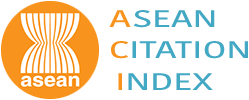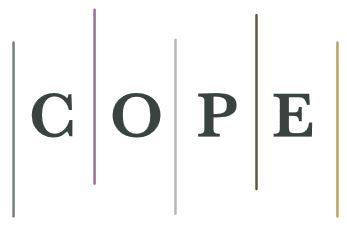Abstract
This work analyses Pope John Paul II’s contributions and attitudes as an international relations Actor. In this context, the research question that guides this work is as follows in terms of global governance, how did the conduct carried out by Pope John Paul II strengthen him as a Model Power? John Paul II inaugurated a new phase of the Vatican’s foreign policy. His diplomacy in mediation and conflict resolution stands out as a fundamental pillar of his pontificate, contributing to the fall of the communist regime in Poland and many other conflicts such as the mediation of the Holy See in the Beagle Channel, Falklands War, Gulf Wars and Balkan War. In the religious dominion, John Paul II intensified inter-religious dialogue with Jewish, Muslim and Buddhists. Regarding Papal trips, they played an extremely relevant role not only from a religious perspective but also from a political and social perspective. Protecting the environment and life was also among John Paul II’s concerns. The Pope clarified that the Church cannot be indifferent to how humans relate to nature. In summary, the words of John Paul II had a significant impact on the political world and civil society, with him being considered a great statesman of the 20th century; in this sense, he could be viewed as a relevant actor in international relations and a Model Power.
Bahasa Abstract
Tulisan ini bertujuan untuk menganalisis kontribusi dan sikap Paus Yohanes Paulus II sebagai aktor dalam hubungan internasional. Dalam konteks ini, pertanyaan penelitian yang memandu tulisan ini adalah dalam hal tata kelola global, bagaimana tindakan yang dilakukan oleh Paus Yohanes Paulus II memperkuat posisinya sebagai Model Power? Paus Yohanes Paulus II membuka fase baru dalam kebijakan luar negeri Vatikan. Diplomasi yang ia jalankan dalam mediasi dan penyelesaian konflik menjadi pilar fundamental dari masa kepemimpinannya, yang berkontribusi pada jatuhnya rezim komunis di Polandia serta dalam berbagai konflik lainnya, seperti mediasi Tahta Suci di Selat Beagle, Perang Falklands, Perang Teluk, dan Perang Balkan. Dalam ranah keagamaan, Yohanes Paulus II memperkuat dialog antaragama dengan komunitas Yahudi, Muslim, dan Buddhis. Terkait perjalanan kepausannya, kegiatan ini memiliki peran yang sangat penting, tidak hanya dari sudut pandang keagamaan tetapi juga dari aspek politik dan sosial. Perlindungan terhadap lingkungan dan kehidupan juga menjadi salah satu perhatian utama Yohanes Paulus II. Paus dengan tegas menyatakan bahwa Gereja tidak bisa bersikap acuh terhadap cara manusia berhubungan dengan alam. Singkatnya, kata-kata dan tindakan Paus Yohanes Paulus II memiliki dampak besar dalam dunia politik dan masyarakat sipil. Ia dianggap sebagai seorang negarawan besar abad ke-20 dan dalam pengertian ini dapat dipandang sebagai aktor yang relevan dalam hubungan internasional sekaligus Model Power.
References
Albuquerque, F. and Carneiro, C. A. (2005). Vaticano, Santa Sé e a Nunciatura Apostólica: Breves comentários. Âmbito Jurídico, Rio Grande, VIII(21).
Arraes, V. C. (2005). A política externa de João Paulo II. Meridiano 47: Journal of Global Studies, 56 (6), 4-8.
Azevedo, D. (2003). Desafios estratégicos da igreja católica. Lua Nova: Revista de Cultura e Política, (60), 57-79.
Barbato, M. (Ed.). (2020). The Pope, the Public, and International Relations: Post- Secular Transformations. Cham: palgrave Macmillan.
Bernstein, C. and Politi, M. (1996). His Holiness: John Paul II and the hidden history of our time. New York: Doubleday.
94
international relations. In Modern Papal Diplomacy and Social Teaching in
Global Jurnal Politik Internasional 26(2)
Borras, S. Jr. and Franco, J.C (2009). Transnational Agrarian Movements Struggling for Land and Citizenship Rights. IDS Working Paper Series No. 323. Brighton: IDS, University of Sussex.
Byrnes, T. A. (2023). Soft Power of the Catholic Papacy’, in Peter Mandaville (ed.), The Geopolitics of Religious Soft Power: How States Use Religion in Foreign Policy (New Y ork; and, Oxford Academic), https://doi.org/10.1093/oso/9780197605806.003.0013.
Carl Bernstein and Marco Politi. 1997. His Holiness: John Paul II and the Hidden History of Our Time. Doubleday. 582 pp. First Things 69 (January 1997): 39-42. Books in Review
Carletti, A. (2012). O internacionalismo vaticano e a nova ordem mundial: a diplomacia pontifícia da Guerra Fria aos nossos dias. Brasília: Fundação Alexandre de Gusmão.
CNN (2007). Pope John Paul II - Special Reports from CNN.com. 1920~2005. Retrieved from http://edition.cnn.com/SPECIALS/2005/pope/
De Souza, S. C. (2008). Mediaçao Da Santa Se Na Questao Do Canal de Beagle um conflito de soberania marítima entre Argentina e Chile. S. Paulo: Editora Manole Lda.
Farewell Ceremony Address by John Paul II, January 25, 1998. Retrieved from http://w2.vatican.va/content/johnpaulii/en/speeches/1998/january/documents/hf_ jp-ii_spe_19980125_lahavana-departure.html.
Ferreira-Pereira, L. C. (2012). The European Union as a ‘Model Power’: Spreading Peace, Democracy and Human Rights in the Wider World.’ In F. Bindi & I. Angelescu (Eds.), The European Union Foreign Policy: Assessing Europe’s Role in the World (pp. 293–305). Washington D.C: Brookings Institution Press.
Flatley, T. P. (2007). The convenient alliance: President Reagan and Pope John Paul II, Cold Warriors. Senior Honors Projects.
Garmus, L. (2009). Ecologia nos documentos da Igreja Católica. Revista eclesiástica brasileira, 69(276), 861-884.
Gonçalves, O. (1999). Introdução às Psicoterapias Comportamentais. Coimbra: Quarteto, pg 91.11. 17.
Guerry. (1960). A doutrina Social da Igreja (1a ed.). Lisboa: Sampedro. Hopf, T. (2004). Discourse Analysis and Content Analysis: Fundamental
Incompatibilities. Qualitative Methods 2 (1): 31-33. 95
Byrnes, T. A. (2020). Sovereignty, supranationalism, and soft power: The Holy See in
World Affairs (pp. 6-20). Routledge
Fox, J. (2003). Religion as an Overlooked Element of International Relations.
International Studies Review. https://doi.org/10.1111/1521-9488.00244.
Maria Manuel Azevedo
João Paulo II. (1982). Mensagem do XV Dia Mundial da Paz, “A paz: dom de Deus confiado aos homens” (Vol. 5). Lisboa: Paulistas.
João Paulo II. (1988). A solicitude social da Igreja (Vol. 21). Lisboa: Paulista. Justenhoven, H.G. (2005). The Peace Ethics of Pope John Paul II (Vol. 3). LJ: U. St.
Thomas. Kamati, A. T. (2014). O sentido do sofrimento humano: à luz da carta apostólica
«Salvifici Doloris». Mestrado Integrado em Teologia.
Keck, M.E. and Sikkink, K. (1998). Conclusions: Advocacy Networks and International Society. In Activists beyond Borders: Advocacy Networks in International Politics, 199–218. Cornell University Press. http://www.jstor.org/stable/10.7591/j.ctt5hh13f.9
Kelsen, H. and Campagnolo, U. (2002). Direito internacional e estado soberano: Com um texto inéd. de Hans Kelsen e um ensaio de Norberto Bobbio (1a ed ed.). S. Paulo: Martins Fontes.
LA Times. (1985). Pope Attacks Apartheid in Speech at U.N. Court. Retrieved from https://www.latimes.com/archives/la-xpm-1985-05-13-mn-9935-story.html.
Lebec, É. (1999). História secreta da diplomacia vaticana. Petropolis: Editora Vozes. Lijphart, Arend. (1971). Comparative Politics and the Comparative Method. American
Political Science Review 65 (3): 682–93.
Lopes Junior, R. (2011). A retórica da Igreja Católica: o uso do discurso político no papado de João Paulo II. Dissertação de Mestrado, Universidade Metodista de São Paulo.
Lorch, D. (1995). Pope Calls for End to Killings in Rwanda. Retrieved from https://www.nytimes.com/issue/todayspaper/2022/04/06/todays-new-york-times
Machado, E. J. T. T. (2016). O Diálogo Inter-Religioso na Construção da Paz. Relatório Final da Prática de Ensino Supervisionada. Mestrado em Ciências Religiosas- Especialização: Educação Moral e Religiosa Católica, Universidade Católica Portuguesa.
Marsh, D. and Furlong, P. (2002). A Skin, not a Sweater: Ontology and Epistemology in Political Science. Theory and Methods in Political Science, New York, NY: Palgrave McMillan 2 (1): 17-41.
Miguel, A. (2003). Porque viajas tanto? S. João do Estoril: Lucerna Editora.
Ndunde, M. (2017). A diplomacia da Santa Sé à luz dos direitos humanos: de João Paulo II aos nossos dias. Dissertação de Mestrado, Universidade Lusófona de Humanidades e Tecnologias Faculdade de Ciências Sociais, Educação e Administração, Lisboa.
O’Brien, J. and Morello, S. (2013). The Catholic Church at the United Nations: Church or State. Catholics for Choice.
96
Global Jurnal Politik Internasional 26(2)
Oliveira Mazzuoli, V. and Teixeira, G. d. F. M. J. R. d. A. (2012). O direito internacional do meio ambiente e o greening da Convenção Americana sobre Direitos Humanos. Revista da AJURIS, 39 (126), 289-342.
Perfil. (2019). Aventuras na História. Retrieved from https://aventurasnahistoria.uol.com.br/noticias/reportagem/conheca-10-fatos- sobre-vida-do-papa-joao-paulo-ii-morto-ha-14-anos-vaticano.phtml.
Portilho, A. C. (2011). O ator Santa Sé na política internacional moderna. Revista Cadernos de Estudos Sociais e Políticos, 1(2), 47-68.
Reese, T. J. (1999). O Vaticano por dentro a politica ea organização da igreja católica. S. Paulo: EDUSC.
Ribeiro, R. R. B. (2020). Os Papas na ONU e a defesa dos Direitos Humanos. Revista Jurídica da UFERSA, 4(8), 94-115.
Riccardi, A. (2011). Pré-publicação: João Paulo II-A biografia. Retrieved from https://www.snpcultura.org/joao paulo ii a biografia.html.
RTP. (2005). Biografia de João Paulo II. Noticias do Mundo, João Paulo II. Retrieved from https://www.rtp.pt/noticias/mundo/biografia-de-joao-paulo-ii_n108404.
Salum, S. (2023). The Holy See and its role in the international system A study in the soft power of the religious actor in international relations. The International and Political Journal. DOI:10.31272/ipj.i56.247.
Strzałka, K. (2014). Dyplomacja czasów przełomu: Jan Paweł II i kształtowanie się dyplomacji publicznej Stolicy Apostolskiej. Politeja-Pismo Wydziału Studiów Międzynarodowych i Politycznych Uniwersytetu Jagiellońskiego, 11(29), 219- 243.
Schelkens, K. (2011). Vatican Diplomacy After the Cuban Missile Crisis: New Light on the Release of Josyf Slipyj. The Catholic Historical Review, 98(4), 680-713. https://doi.org/10.1353/cat.2011.0153.
Silva, J. A. (2006). O Encontro de Assis: marco simbólico do diálogo inter-religioso. Theologica, 41(2), 273-297.
Southafrica.info. (2005). Mandela ‘deeply inspired’ by Pope. Retrieved from https://southafrica-info.com
Recuperado de https://revistas.faculdadedamas.edu.br/index.php/neari/article/view/1611
Tarlton, J. (2012). The Catholic Church as a Prominent Transnational Actor in the International Political System. Doctoral Thesis, Central European University,
Souto, M.S. (2021). Diplomacia Papal e Política Externa Vaticana na Guerra Fria: A
influência da Diplomacia de São João Paulo II e o Declínio do Bloco Soviético.
NEARI EM REVISTA, 5(7).
97
Maria Manuel Azevedo
Tibet-Vatican. (2007). Dalai Lama mourns John Paul II, "a true spiritual practitioner. Help Asia News. Retrieved from http://www.asianews.it/index.php?l=en&art=2937.04/03/2005
Troy, J. (2008). The Catholic Church: An underestimated and necessary actor in international affairs. Georgetown Journal of International Affairs, 9, 65.
Ujházi, L. (2021). The Role of Pontifical Legates in Facilitating Peace. Ius Canonicum, 61 (691-731). ISSN 0021-325X DOI 10.15581/016.122.003.
Vukicevic, B. (2018). The Turkish Yearbook of International Relations, 4 9(117-138). DOI: 10.1501/Intrel_0000000319 Foreign Policy Doctrine of the Holy See in the Cold War Europe: Ostpolitik of the Holy.
Wayland, S. (2004). Ethnonationalist Networks and Transnational Opportunities: The Sri Lankan Tamil Diaspora. Review of International Studies, 30(3), 405-426. http://www.jstor.org/stable/20097925
Welcome Ceremony Address of Pope John Paul II, January 21, 1998. Retrieved from http://w2.vatican.va/content/johnpaulii/en/speeches/1998/january/documents/hf_j p-ii_spe_19980121_lahavana-arrival.html.
Yin, R. K. (1989). Case study research: design and methods. USA: Sage.
Recommended Citation
Azevedo, M. Manuel
(2024)
"THE IMPORTANCE OF THE PONTIFICATE OF THE POPE JOHN PAUL II IN INTERNATIONAL RELATIONS,"
Global: Jurnal Politik Internasional: Vol. 26:
No.
2, Pp. 77-98.
DOI: 10.7454/global.v26i2.1334
Available at:
https://scholarhub.ui.ac.id/global/vol26/iss2/4
Included in
Political Science Commons, Religion Commons, Social Justice Commons

















